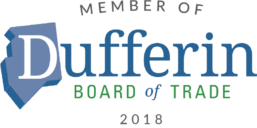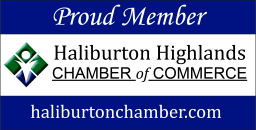The following is based on one of CFO Alternative Inc. clients. All of the names and telling details have been changed to preserve client privacy.
Dave is a partner at a 30 year old Customs Clearing firm in Mississauga. Dave was introduced to me by another client of mine. In our first meeting I had Dave give me the background on his company and his partner, Pat. The business was founded by Dave’s father, who was no longer directly involved in the business. Pat had joined the firm 13 years ago and had bought into the business when Dave’s father retired.
Although his company was doing well, Dave was feeling overwhelmed with the responsibilities of his role as VP of Finance and, specifically the financial control of the business. I asked Dave what their profit margin is on their business. Dave thought about it for a moment and answered “About 10%. It varies from customer to customer”. I took this opportunity to ask Dave if the Pareto Principle applied to his business; that is that 80% of their revenue comes from 20% of their clients. Dave answered right away that this was the case and added “my gut feeling is that our top 20% generates a higher profit margin”. I thanked Dave for sharing this information and asked him the obvious question, “Why do you continue to handle the 80% of your clients that generate 20% of your revenue, and that average a lower profit margin?” At this Dave looked down, somewhat embarrassed. “I think the biggest reason is that Pat and I are focused on revenue. Pat is responsible for sales and I run the office. Sometimes it feels like we’re running two separate businesses”
I shared with Dave that this was a challenge that faced many entrepreneurs. They had fallen into the trap of working reactively, not proactively. Dave and Pat were caught up working “in” their business and not “on” their business.
I asked Dave “How do you spend your time each day”? Dave gazed out the window and thought for a moment and replied, “I have been in the business for 20 years and over that time period I’ve spent a tremendous amount of time putting out fires. If I am honest with myself, they were fires that someone else could have put out or fires that could have been prevented in the first place”. I asked Dave to clarify for me what he meant by that. He continued, “I have been so bogged down with daily activities, like collecting small dollar receivables, and I justify to myself that I have to do them because that is how I gauge if the day was a success”.
Dave went on to tell me that they are approaching year-end and his time is being spent preparing for the accountants. He knows that he will have to dedicate 3-4 days with their accountant getting the information they will need to prepare the “Review Engagement” Financial Statements. Dave explained this time is required to gather the required information and educate the accountant on their accounting processes.
Dave agreed that he needed some help because he could not do it on his own. He also saw the potential for his business. Revenues were in excess of 1 Million, but they could be 5 Million by now. I highlighted for Dave that it seems he has two key issues: Time management and Strategic Planning.
As we sat and discussed his current situation it became very clear to us that Dave wasn’t optimizing his time. He was spending too much of his time on the daily Urgent but Important tasks. Dave agreed that this was a problem and that he was ready to try and work more proactively. Over the next few months, Dave and I worked together to customize a system that worked for him and his accountant. The system streamlines their processes and produces reports that allow Dave and Pat to see where they are in relation to their goals. Dave and I also developed a Credit and Collection policy outlining Financial Terms to all new clients with a copy being sent to all existing clients that had a history of being late with payments.
One of the biggest challenges that entrepreneurs face is segmenting their client base and then developing a sales and service plan for each segment. Going through this process allows a firm to clearly outline its ongoing value proposition for their clients, while setting context for how they work with clients. Receiving financial reports illustrating their averages allows Dave and Pat to set benchmarks for different levels of clients. This allows the entire organization to make better use of it’s time as client management is now a systemized process.
I asked Dave how he and Pat had projected growth in their business plan. Again, Dave gave me an embarrassed look, “We don’t have a business plan!”
I answered, “Without a plan how do you know if your goals are realistic and attainable?” As we discovered in our case study “The Value of Measurement”, the power of the five financial levers can really power strategic growth in a business.
Dave was excited to learn more and felt that this type of measurement would be as valuable for Pat in sales as it would be for him in managing the financial aspect of their business. He asked me to review their past three years and help them develop pro forma financial statements to support the business plan they were going to develop.
Today, Dave and Pat’s time is spent nurturing their top clients, building a stronger bond with them. He has delegated tasks to his support staff and to outside professionals. Dave now concentrates his primetime on adding to his top client list. His sense of accomplishment now comes from turning his clients into “Raving Fans” and knowing that he is working “on” his business, not just “in” his business.
__________________________
Lessons learned
Dave learned four important lessons about financial management:
- Be honest with yourself and recognize your weaknesses.
- Learn from past mistakes and put proper measures in place to prevent them from happening again – get clear on your terms.
- Ask for help.
- Focus on preventing fires from starting instead of constantly putting them out.




